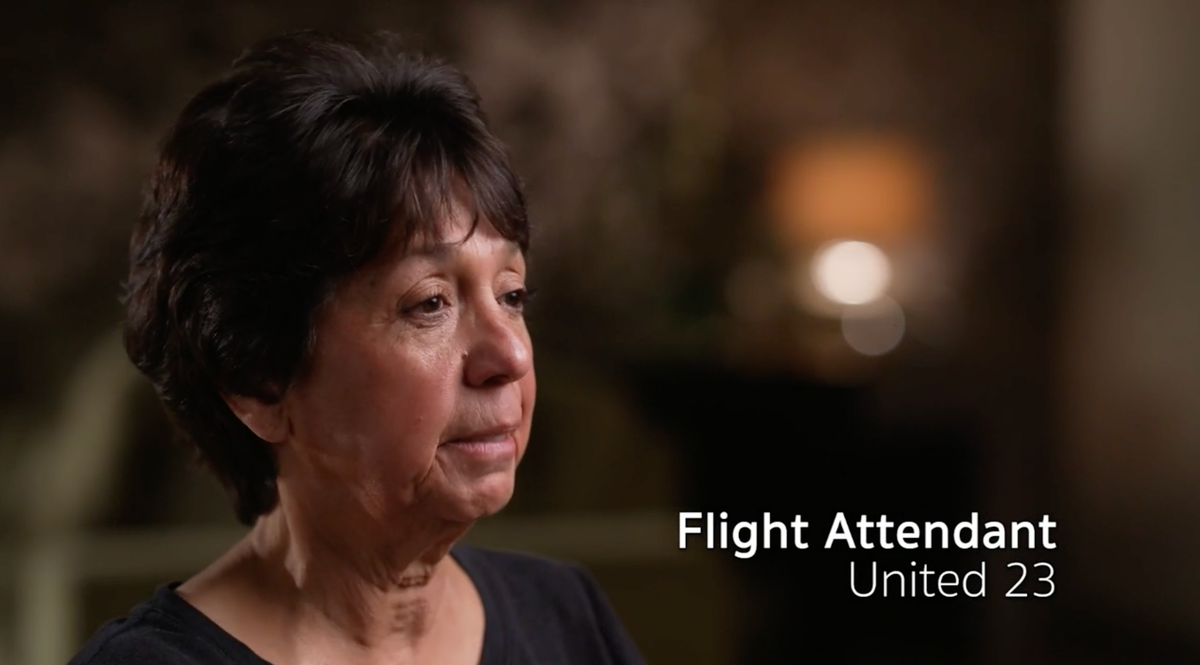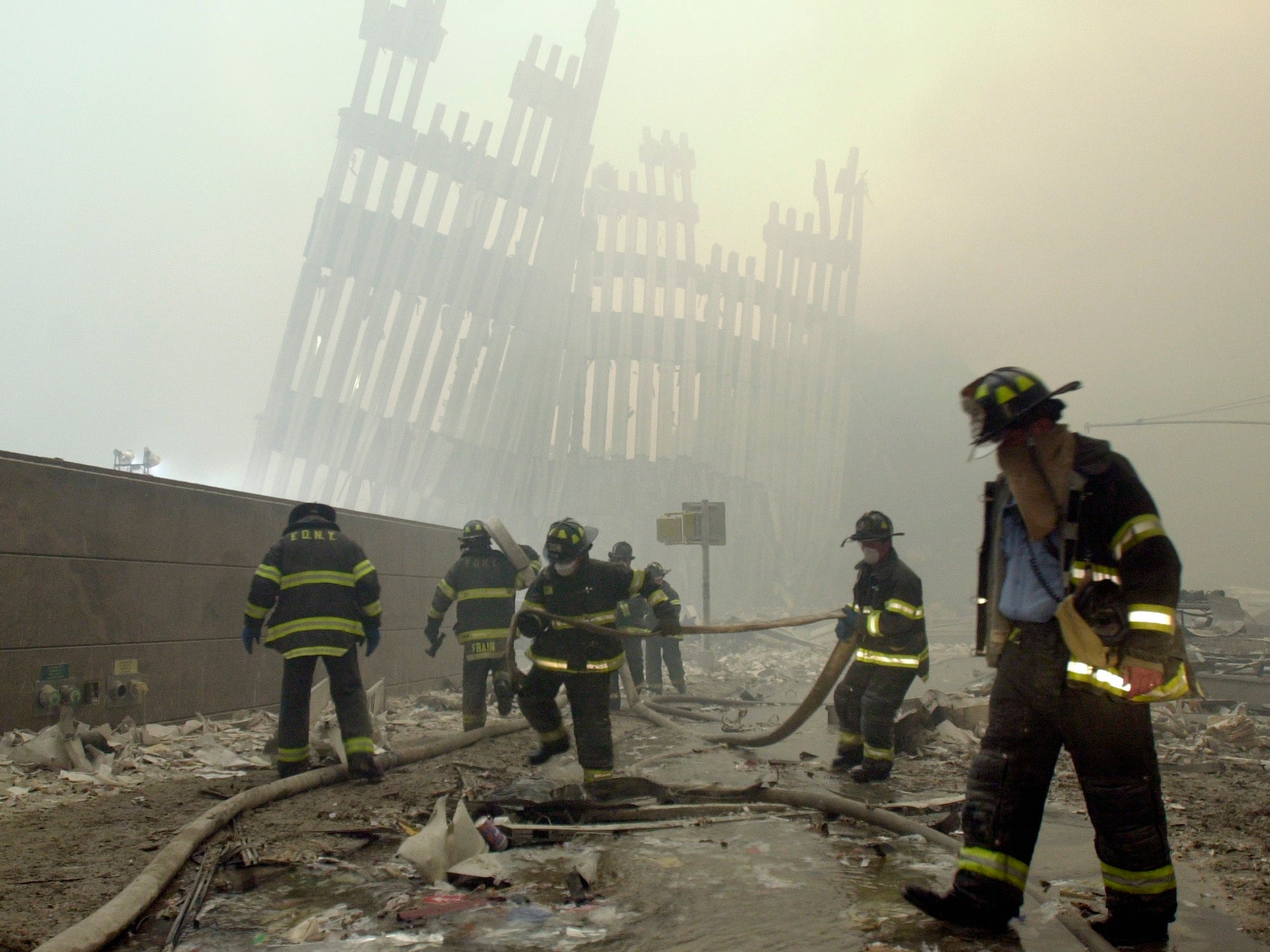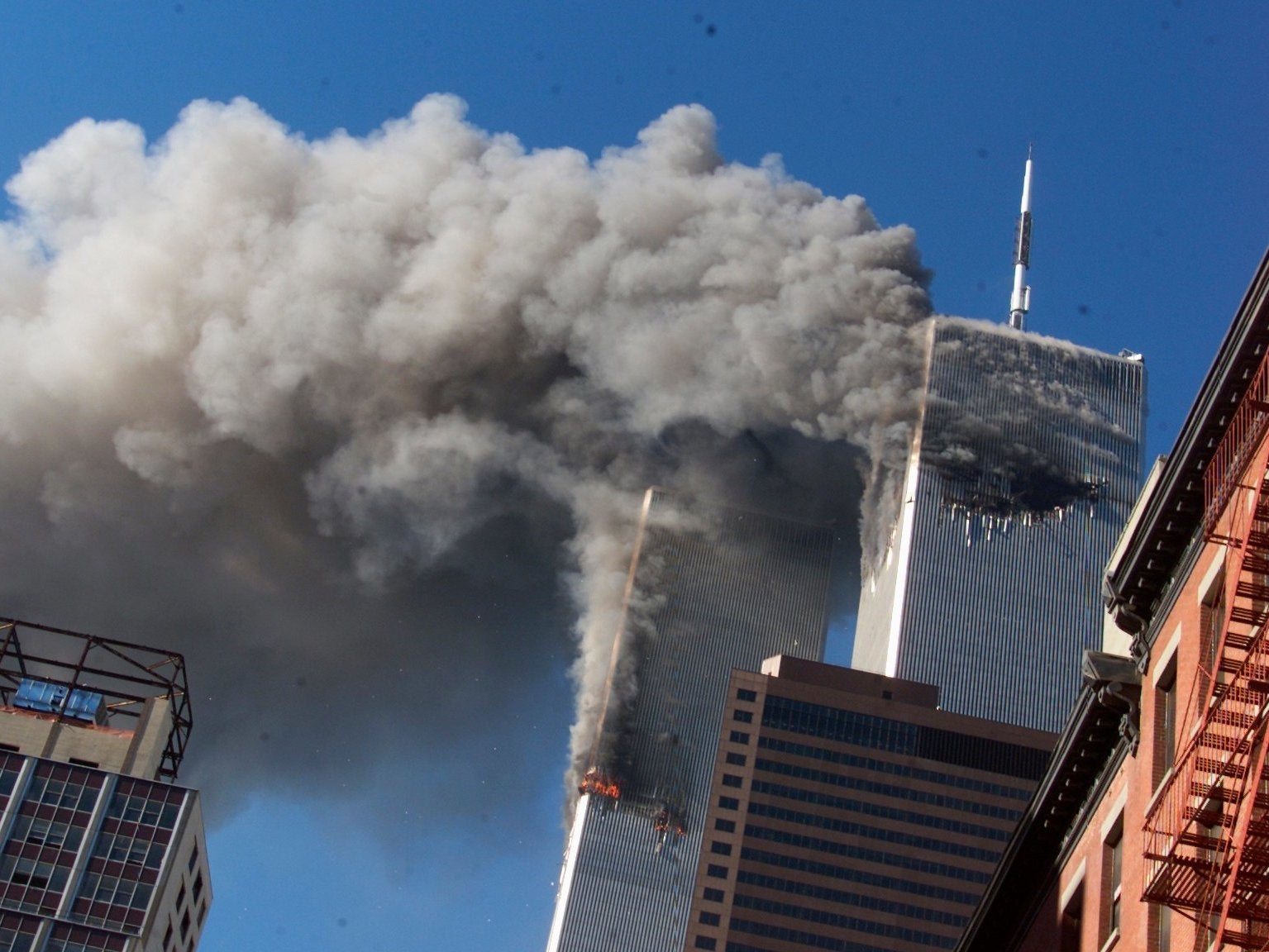
The sun was shining and there were no clouds in the sky as United Airlines captain Tom Manello went through his pre-flight checks in the early morning of 11 September, 2001.
As he did so, passengers on four other flights leaving from Boston, Newark, and Washington DC were preparing to execute a coordinated series of hijackings that ultimately kill nearly 3,000 people and ignite two decades of global warfare.
But for all the investigations and soul-searching that followed the 9/11 attacks, there are still some mysteries we haven't solved. Chief among them: was Manello's aircraft also intended to be a target?
"I now believe that it is more likely than not that we were the fifth airplane," said Manello in a recent TV interview. "There's a good chance that somebody was planning to try to use our airplane as a weapon of mass destruction."
That was the thesis of a new TMZ documentary called 9/11: The Fifth Plane, which aired on Fox on Monday night, based on interviews with Manello and three other members of his flight crew.
The online tabloid investigated longstanding claims that United Airlines Flight 23 might actually have had its own set of hijackers aboard, who aborted their mission when the flight was delayed by pure chance.
But the theory raises many questions, not least why neither the FBI or the US government's landmark investigation into the disaster ever mentioned anything about United 23.
"It's definitely chilling," Henry Harteveldt, a travel industry analyst and president of the Atmosphere Research Group, tells The Independent. "If [these claims] are indeed accurate, it is information that needs to be taken seriously...
"It raises the question: if there could have been a fifth aircraft, then could there have been even more than that? And would any of those aircraft be intended to attack other cities in the US?"
However, he also cast scepticism on some of the documentary's claims, saying: "I'm concerned about the accuracy of some of these assertions."
‘Everything seemed perfectly normal’
United 23 was due to take off around 9am from New York City's JFK Airport. Like the other planes used in 9/11, it was a cross-country flight – in this case, bound for Los Angeles – which meant that it was fully loaded with highly flammable jet fuel.
"Everything seemed perfectly normal," Manello told TMZ. "Everybody was in a good mood, everybody was happy. It was going to be a fun day."
While boarding passengers and preparing to taxi to the runway, there were several incidents that struck crew members as strange, although they seemed harmless at the time. Flight attendant Sandy Thorngren noticed a passenger in business class who appeared highly nervous, sweating profusely despite wearing only a T-shirt in the relatively cold airplane cabin.
In first class, the purser – known in the documentary only as Deborah – got into a minor dispute about food with four passengers: a "well-built" man in a tan suit, a young boy around 6 or 7 years old, a man who seemed to be a "bodyguard", and a woman in a niqab, or full-body covering.

However, Thorngren and another flight attendant, Barbara Brockie Smaldino, became suspicious that the person in the niqab was actually a man, because they had large hands with hair on the back of them. "It was definitely a male underneath that [niqab]," Thorngren told TMZ.
The group had said that they did not eat meat, so Deborah spent a long time trying to get them fruit plates. But they were insistent they did not want to eat and wanted to take off as soon as possible, even though it would be a very long flight. One of them also asked if they could visit the cockpit, because the child really wanted to see inside.
Plane hatches found mysteriously open
At 8:46am, the first plane flew into the north tower of the World Trade Centre. Reports of the hijackings took time to percolate out through the US air traffic control and military grapevine, so when Manello heard about it over the radio, he assumed a small plane had accidentally crashed while "trying to do something stupid" such as flying between the towers.
However, that day at JFK turned out to be unusually busy, and Flight 23 was stuck in a queue behind ten or so other planes. Hence, it still had not taken off when a second plane hit the south tower and United's dispatcher warned all transcontinental pilots to "beware cockpit intrusion".
Pandemonium ensued as all flights across the US were grounded for fear of further hijackings and JFK Airport was evacuated. Manello and his co-pilot barricaded the door, readied improvised weapons, and taxied back to the gate while passengers frantically called their loved ones to let them know they were safe.
Then came the incident that truly alarmed the crew. Airport workers on the ground observed someone running inside the plane, visible through the portholes – after all the passengers and the crew had left. Staff had already checked the whole plane for stragglers and were quite sure nobody was left on board.

Manello reported this to the airline, and the next day all crew members were interviewed by the FBI. Investigators found that one of the hatches in the plane's floor, leading down into electronics compartment, was open – which could not have happened before the passengers disembarked because they are bulky and block the whole aisle when raised.
"When I was talking to the FBI, and they told me those floor hatches were open, I couldn't breathe. I tried to figure out how those hatches could be opened, unless there was somebody down in the electronics area, and they opened it after we left the aircraft," said Deborah.
Worse, airline staff later found boxcutters – small knives used in at least two of the 9/11 hijackings – concealed in a seat-back pocket of another plane that had been sitting next to Flight 23. Its tail number was 6001, very close to Manello's 6002.
Joining these dots, the crew now believe that these boxcutters were planted ahead of time by an undercover terrorist, perhaps working for the airport or one of its private contractors. They were meant to be used by the hijackers, but through a simple mistake, they were put on the wrong plane.
Then, when the plot failed, someone – perhaps the same person – snuck on board Flight 23 in an attempt to remove the evidence, explaining the person seen running and the hatch left open. According to TMZ, it would have been easy enough to access the electronics compartment via a hatch on the plane's belly, before climbing up into the cabin through the inner hatch.
Asked by TMZ whether he could think of another rational explanation for these events, Manello said: "Honestly, no. I can't think of another reason why somebody would do that.”
‘There’s very little doubt in my mind’
There has long been speculation that the four planes hijacked on 9/11 were not the only targets. In 2004, the US government's 9/11 Commission reported that Al Qaeda mastermind Khalid Sheikh Mohammed initially hoped to capture ten planes.
After the attacks, boxcutters were also found on two long-range Delta Airlines flight and an American Airlines flight. An FBI report made public last year said that the seat where they were hidden had been occupied by a Saudi Arabian pilot who had previously attracted suspicion from the agency (15 of the 19 hijackers were Saudi Arabian, as was ringleader Osama bin Laden).
As early as 2011, Manello's co-pilot Carol Timmons, who later became the first female general in the Delaware National Guard, raised the question of whether the four people in first class had also been hijackers. Manello also told his story to The Florida Bulldog in 2022, and the United dispatcher said he was told that the four suspicious passengers never claimed their luggage and that "incriminating" items were found inside.
In TMZ's documentary, aviation safety expert and 9/11 historian Lynn Spencer said: "During my research, it was made very evident to me from the highest levels of our government... that there were more than just the four planes.
"United 23 would have become airborne right about the time of the other hijacked aircraft on September 11, and there's very little doubt in my mind that United 23 was the fifth airplane."

Haarteveldt, however, does have doubts. He points out that lots of people are nervous when they fly; that small children frequently ask to be shown inside the cockpit, and are often allowed to; and that we must be "very careful about not resorting to cultural biases" in casting suspicion on Muslim passengers.
About the dispute over fruit plates, he says: "I will tell you something from experience working with airlines. If you tell people that you're going to have to take a substantial delay for catering, generally, passengers will say 'we'd rather go and get to our destination and eat when we get there'."
As for the report of people running inside the plane, Harteveldt says it is shaky, as they could have been airline crew mistaken for passengers. The boxcutters are harder to explain, but he questions why an infiltrator within the airport staff would not have been discovered before now.
Authorities won’t say what came of their investigation
There is also the fact that the FBI, according to United 23's crew, investigated all this – but we don't know what came of the investigation. Asked by The Independent whether it had ever made any charges or arrests in connection to the flight, the agency declined to comment.
"If the FBI missed information about a potential fifth aircraft, it's embarrassing for the agency," says Harteveldt. "Or if they still consider it to be a matter of national security that has not yet been cleared for public discussion."
The 911 Commission also never mentioned United 23 in its final report. Former staffer Miles Kara told the Bulldog that his analysis of Al Qaeda's plot "does not have room for a fifth plane", and that if there was one, it was unlikely to have come from "yet another airport" in addition to the three already confirmed.
Hence, the truth about United 23 is unclear and may never be known. But the experience of at least seeming to have suffered such a near miss was clearly traumatic for the crew, who said they struggled to work afterwards.
According to the documentary, they were denied compensation by the airline, which argued that they had not suffered any unique stress beyond what all other air crew suffered on that day, until finally being sued and reaching a settlement.
"It's been 21 years, and it still stays with me," said Thorngren. "The terrifying, horrific events, and the way I was treated by a company that I was loyal to for 30 years. I decided I just said couldn't do anymore. I retired in 2003."
"The indifference, and the way we were treated, was abominable," said Smaldino. "So it was time to leave that job that I worked so hard for."
United did not respond to requests for comment.







